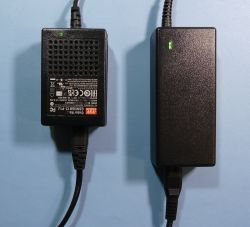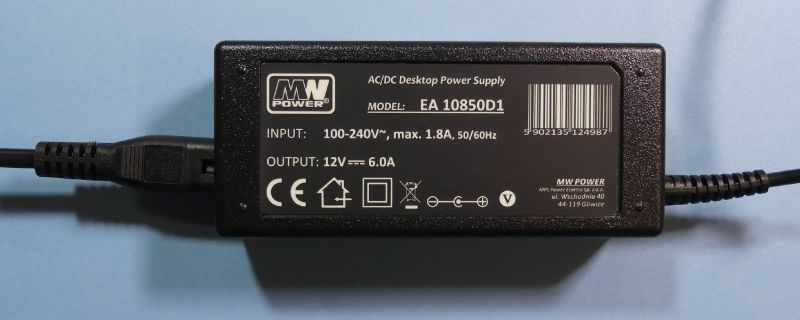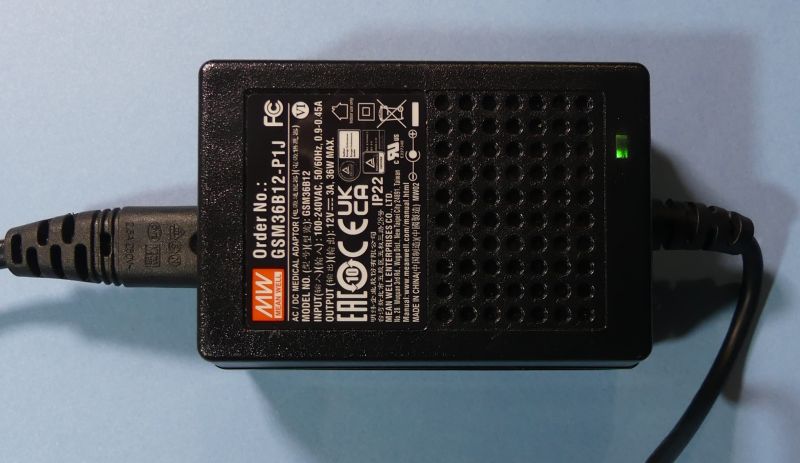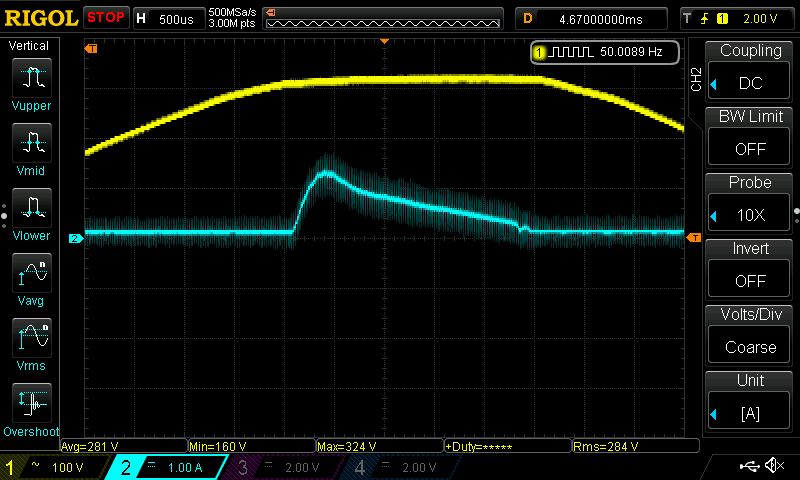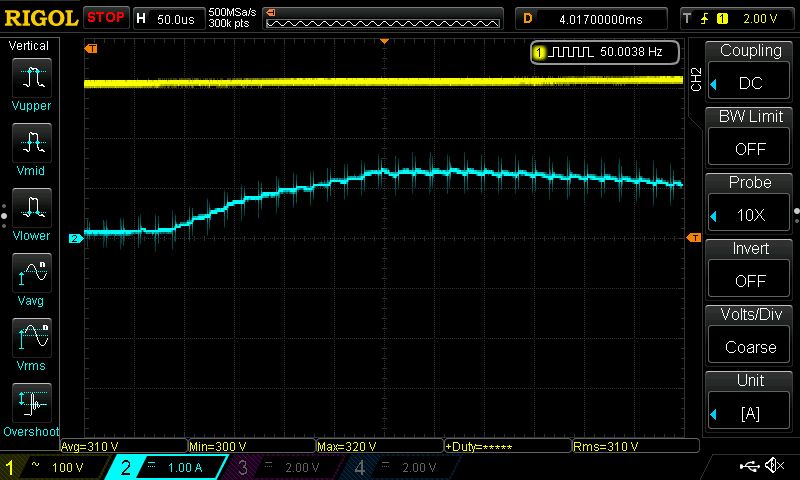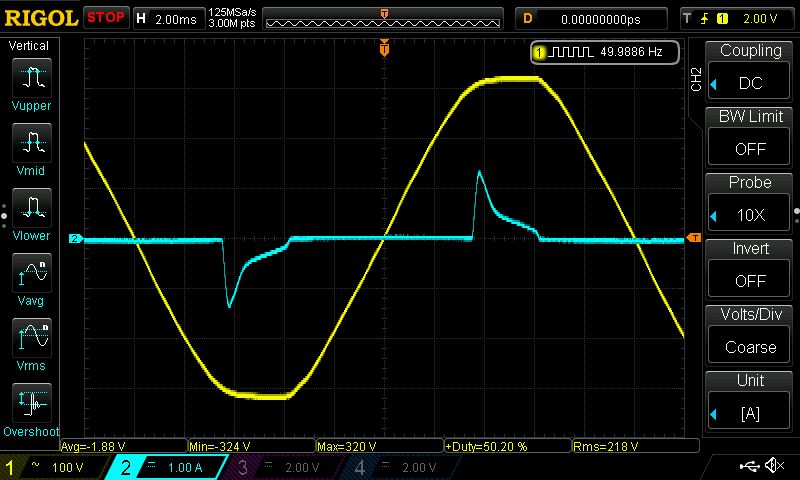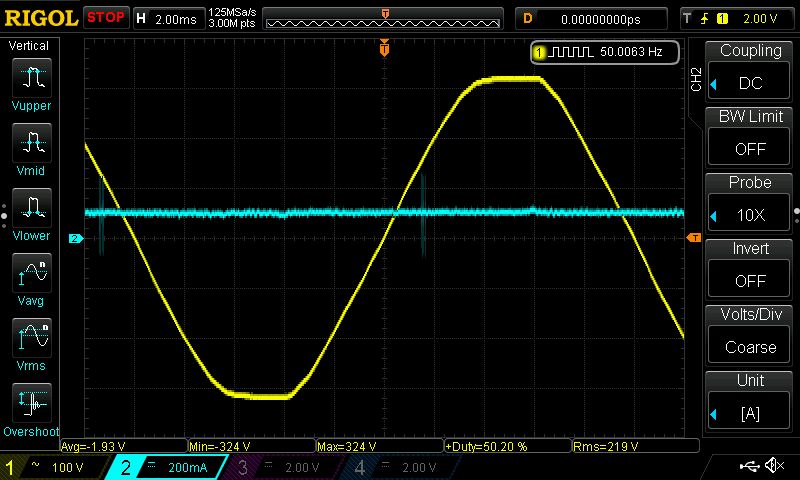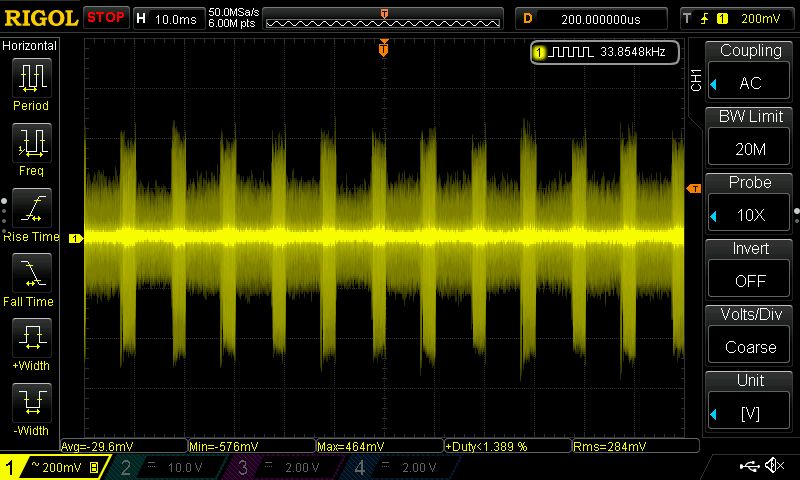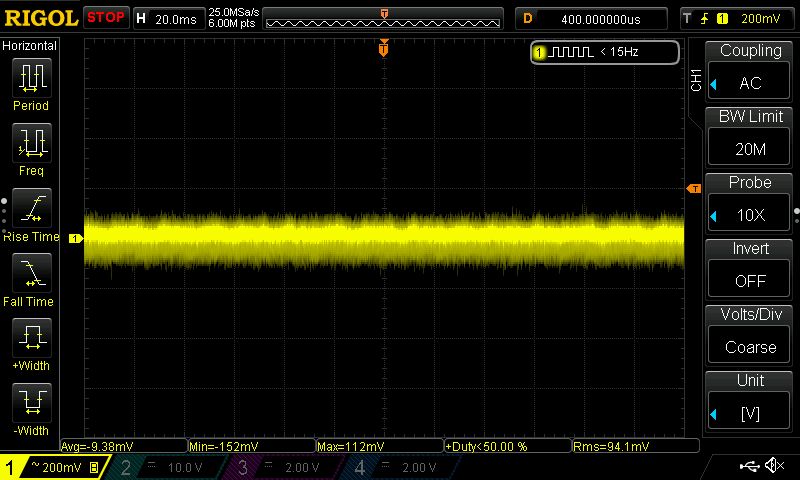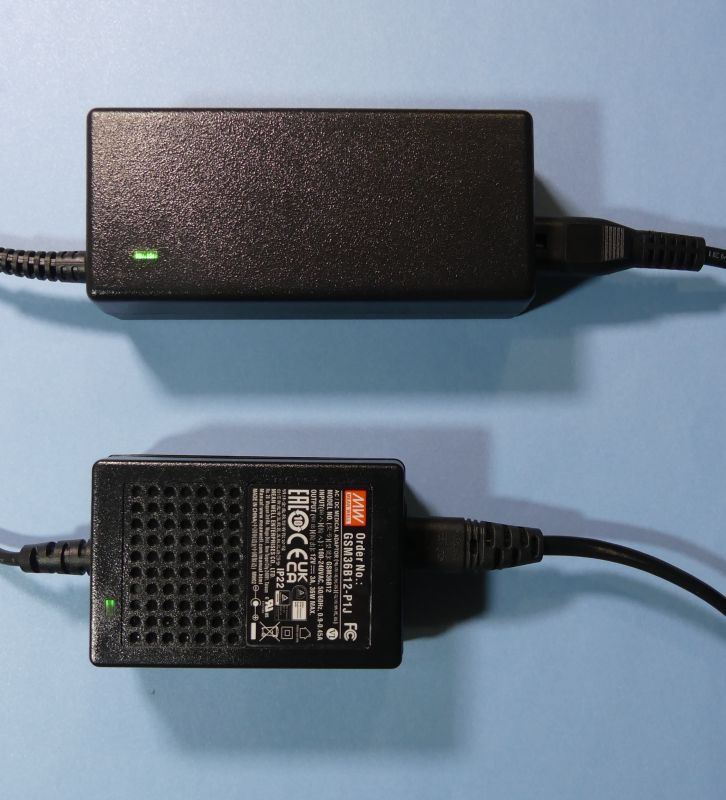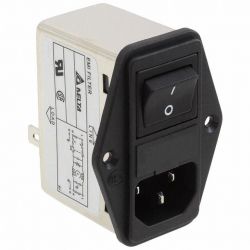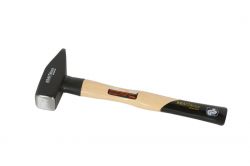When I noticed for a long time that the watch was out of sync with the DCF receiver, at first I suspected problems with the strength of the DCF77 signal transmitted from German territory. After contacting a ham radio operator who has a similar watch at his operating station, it became clear that the cause must be some local interference or a failure of the watch. I got the hint to try to detect the source of possible interference with a longwave receiver. This was a hoot, the source of the strong interference was the SMPS power supply with which I replaced the faulty unit. The power supply visible in the photo, by the way, replaced several other plug-in power supplies that arrived around the ONT device, switch, router, i.e. the devices that provide internet access in the house. It is a model EA 10850D1 MW Power power supply.
.
The interference generated by the power supply was strong and modulated by the operation of the inverter and also depended on the current drawn from the power supply.
.
I looked through the box of power supplies and through selection using a receiver managed to find a specimen with low levels of radio interference. This is the model GSM36B12 MW MEAN WELL power supply.
.
The interference has a smaller range and is more like a hum than a whirr.
.
The current waveform (blue) at the input of the first PSU reveals that this is a design without active PFC correction. At this power this is not mandatory and with the low price of the product it is not possible. The yellow trace is obviously the mains voltage sine wave.
.
There are "pins" superimposed on the current waveform this is probably the result of operating at a certain frequency of the inverter circuit.
The waveforms are quite complex they are repetitive double current pins.
A power supply that generates less distortion also does not have an active PFC circuit, but no additional spikes are imposed on the current waveform.
.
At idle, the first power supply also generates cyclic current spikes.
The second power supply at idle draws a current that resembles a sine wave.
The output voltage of the first supply is more strongly noisy,
compared to a power supply that generates a lower level of interference.
.
I managed to eliminate the source of DCF signal interference. SMPS power supplies offer high efficiency, high currents, small dimensions but sometimes generate strong radio interference. The current drawn by such power supplies is strongly distorted, in power supplies with higher power we find active PFC systems and the current drawn has a chance to resemble a sine wave.
.
Have you encountered electronic devices that, by their level of interference, impeded the reception of radio signals?
When PLC (power line comunication) appeared ham radio operators were concerned about strong interference on the amateur bands. It turned out that PLC did not become that popular, while SMPS are often enough to cover weak radio signals with their whirring. It used to be that TV receivers and ~15KHz deflection drew a strong mark on the FFT in the software receivers of VLF band listeners. Now it is common for the LED 'bulb' to generate interference in the wider band. The amount of RF interference has increased quite strongly over the years.
.
.
.
The interference generated by the power supply was strong and modulated by the operation of the inverter and also depended on the current drawn from the power supply.
I looked through the box of power supplies and through selection using a receiver managed to find a specimen with low levels of radio interference. This is the model GSM36B12 MW MEAN WELL power supply.
.
The interference has a smaller range and is more like a hum than a whirr.
The current waveform (blue) at the input of the first PSU reveals that this is a design without active PFC correction. At this power this is not mandatory and with the low price of the product it is not possible. The yellow trace is obviously the mains voltage sine wave.
.
There are "pins" superimposed on the current waveform this is probably the result of operating at a certain frequency of the inverter circuit.
The waveforms are quite complex they are repetitive double current pins.
A power supply that generates less distortion also does not have an active PFC circuit, but no additional spikes are imposed on the current waveform.
.
At idle, the first power supply also generates cyclic current spikes.
The second power supply at idle draws a current that resembles a sine wave.
The output voltage of the first supply is more strongly noisy,
compared to a power supply that generates a lower level of interference.
.
I managed to eliminate the source of DCF signal interference. SMPS power supplies offer high efficiency, high currents, small dimensions but sometimes generate strong radio interference. The current drawn by such power supplies is strongly distorted, in power supplies with higher power we find active PFC systems and the current drawn has a chance to resemble a sine wave.
Comparison of input current of power supplies without and with active PFC:
.
Have you encountered electronic devices that, by their level of interference, impeded the reception of radio signals?
When PLC (power line comunication) appeared ham radio operators were concerned about strong interference on the amateur bands. It turned out that PLC did not become that popular, while SMPS are often enough to cover weak radio signals with their whirring. It used to be that TV receivers and ~15KHz deflection drew a strong mark on the FFT in the software receivers of VLF band listeners. Now it is common for the LED 'bulb' to generate interference in the wider band. The amount of RF interference has increased quite strongly over the years.
Here is more about active PFC correction with oscillograms and internal design of power supplies:
.
.
Cool? Ranking DIY







